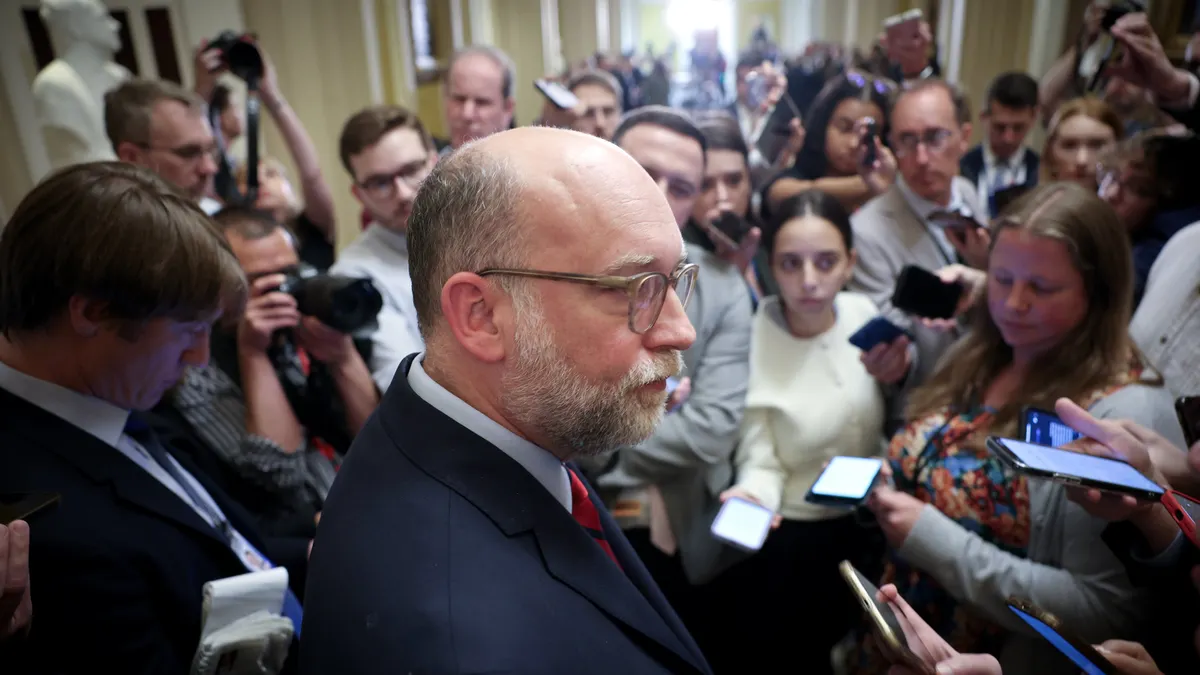Trends, topics and news for the first six months run the gamut in HR from the much-discussed new Department of Labor overtime rule to the challenges employers face in today's ever-competitive recruiting battlefield.
With that, HR Dive is taking a look back at six of the topics most followed by our newsletter subscribers from the start of the year until June.
Labor Dept. OT rule shakes things up
When President Barack Obama unveiled the specifics of the Labor Department's highly anticipated change in the current overtime designation (exempt vs. non-exempt), it drew a raft of responses — from the mainly unhappy business interests (typically in industries that pay hourly) to the champions of lower-paid workers. While the new rule wasn't announced until the second quarter, HR Dive readers were interested in the details.
For HR leaders overall, there are plenty of general concerns, mainly issues such as pay options and scheduling decisions. After all, the new rule, last updated in the second Bush administration (and that was a minor hike) just about doubled the new exempt threshold to $47,476.
Some parties, such as small businesses, educational institutions and non-profits, had a rougher path to understanding how the rule applies than larger private employers. Then, there was the question of whether or not the dramatic changes would result in more litigation, or they would wreak havoc in certain industries that lean towards the creative. With the Dec. 1 deadline looming, it will be interesting to see how it shakes out.
EEOC/legal trends: new discrimination cases
In terms of headlines, a very recent event shook up the status quo when the Equal Employment Opportunity Commission (EEOC) levied its first serious fine for sexual orientation discrimination under Title VII.
In a related event, the EEOC shocked the HR world when it reported that its special task force found that sexual harassment training was falling way short, to the point that the task force's report described its impact as "negligible."
While some court decisions were seen as proof of EEOC's growing power, the commission did suffer a major setback in an important case that revolved around returning legal fees in cases it loses — a win for employers.
Finally, employment law firm Fisher & Phillips delivered a solid, quick look at the key legal decisions affecting employment in 2016's first six months.
Zenefits: From unicorn to struggling to survive
While it may not be fair to single out benefits startup (and former rising star) Zenefits for the company's notorious nosedive, there are some lessons learned for entrepreneurs in the making (and HR pros at small businesses as well). From a controversial CEO getting the boot to government probes, layoffs to a reorganization, Zenefits has been through the ringer.
The good news is that even though the beleaguered company's value has been cut from $4.5 billion to $2 billion, it's still hoping to rebound, which may be good news for the 20,000 or so small businesses who depending on the company for their benefits offerings.
Parental Leave: A growing perk
Among employee benefits, topics such as paying off college loans and tuition too, the perk getting the most exposure was parental leave. The state of New York and city of San Francisco led the way, along with big brand employers such as Twitter, Netflix (not without a bit of controversy), Coca Cola, Facebook and even Wall Street expanding leave.
While much of of parental leave focused on new mothers, the vast majority of fledging fathers (and same sex parents) wanted more time with new family additions as well.
Finally, one expert believes that in a presidential election year, if the Democrats maintain the White House parental leave may get the boost it needs to level the playing field between larger and small employers in attracting talent.
Recruiting: HR's Energizer Bunny
While managing benefits, employee records, performance, culture and other key HR processes remain challenging, recruiting continues to get much attention as one of the toughest issues HR leaders face. In the so-called talent wars, one debate is whether or not technology and big data can deliver a better candidate; or, on the flip side, is the human touch still the number one success factor in attracting and landing top talent?
In that vein, there is a strong argument that old-fashioned employee referral programs still bring in the best people, especially when the need arises for an alternative after finding the external pipeline is just not overflowing.
Social media remains a still-untapped but fast-growing recruiting resource, according to research and experts, along with the notion of HR taking its cues from marketing when it comes to the great talent search.
Of course, there is always the chance that the talent wars are more hype than reality.
While issues such as engagement, learning, pay equality, diversity and technology made waves in HR during the first half of 2016, there will be more and different changes ahead as 2016 unfolds, and we expect to report on them in December — as well as what 2017 may hold for the HR community.


















